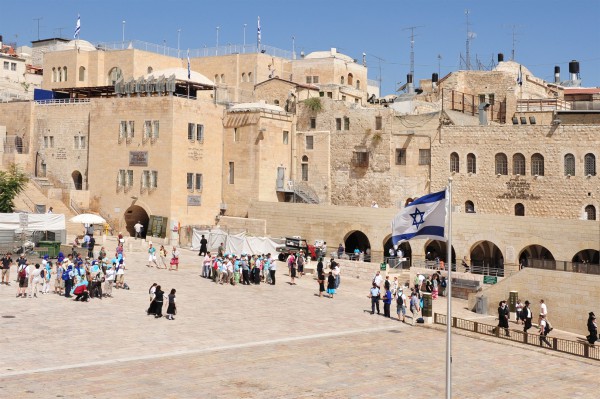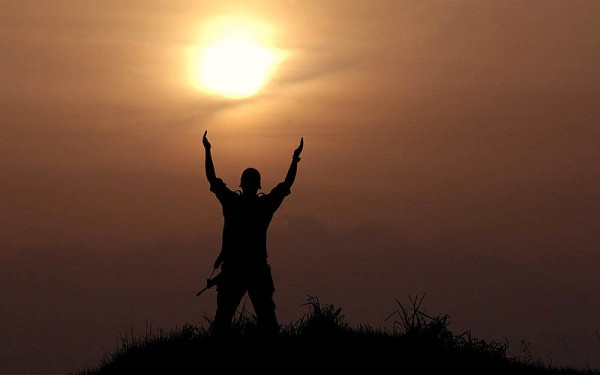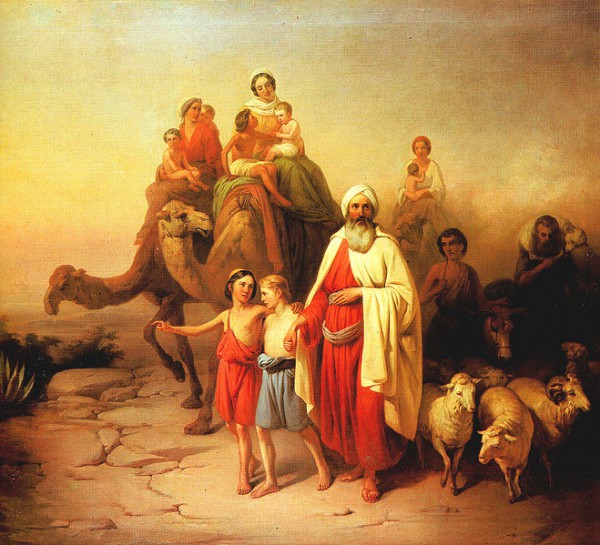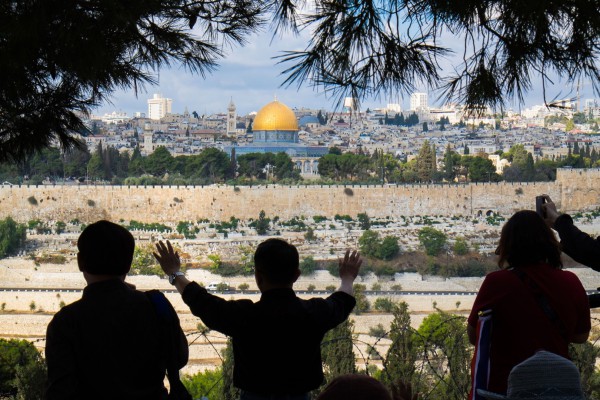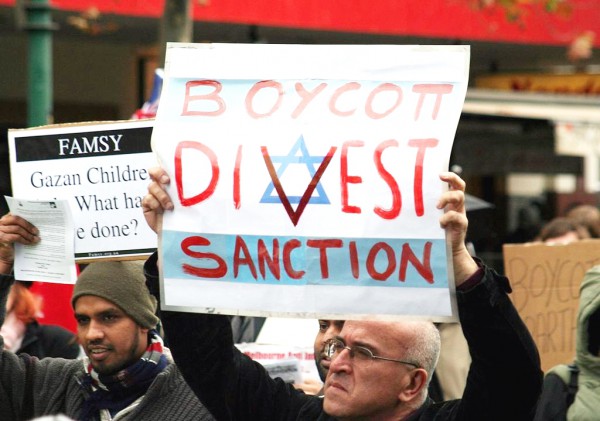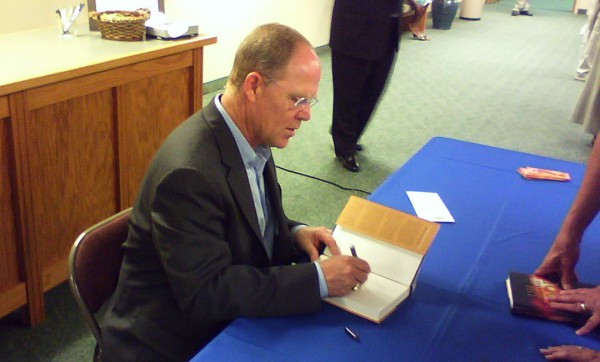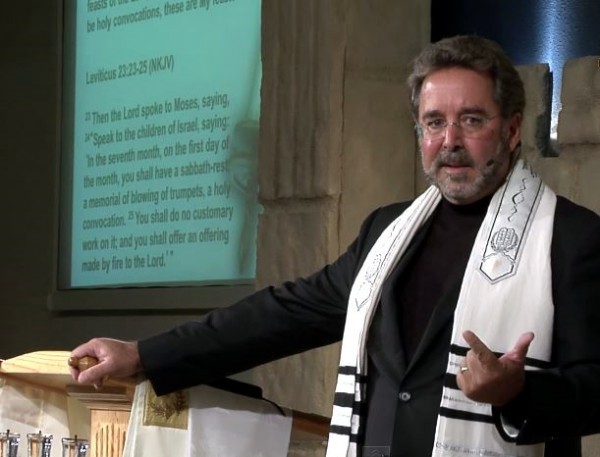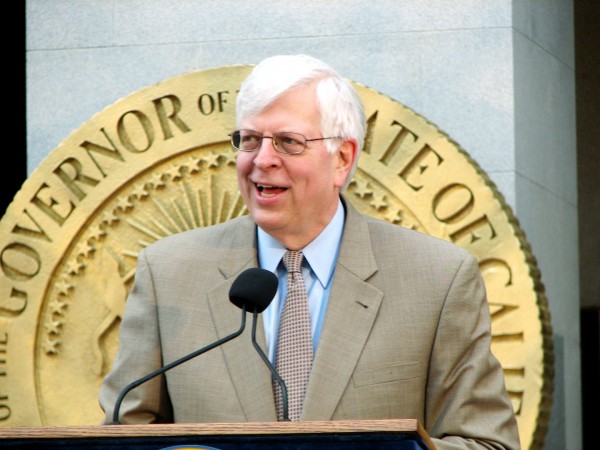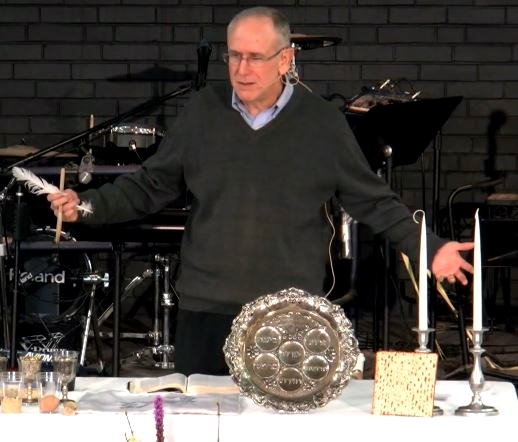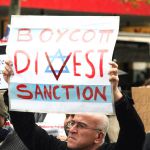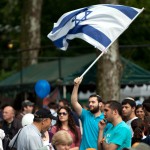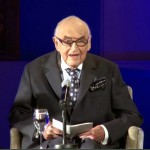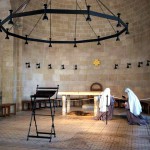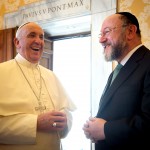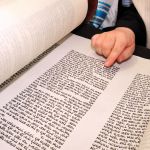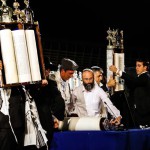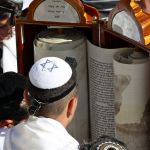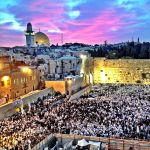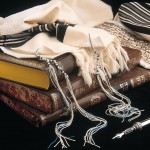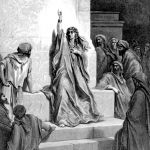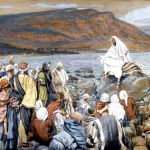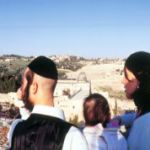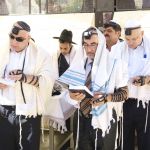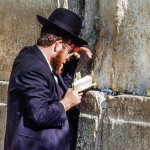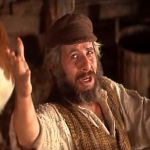When Jewish people come to know their Messiah, fellow Gentile Believers often feel that these once incomplete Jews are now completed Jews and no longer need to express their Jewishness.
While it is true that Jewish followers of Yeshua (Jesus) are part of those called out from every tribe and tongue, Gentile Believers often forget that Yeshua and His first Believers were Jewish—and they were observant Jews.
Consequently, Jewish Believers who insist on any type of Jewish observance are many times criticized for “maintaining the middle wall of division,” which is a reference to the wall that was established in the ancient Temple in Jerusalem to separate Jews from non-Jews.
But, as the Jewish Messianic evangelist Sid Roth has said, it was never the intention of God or Yeshua to push Jews and Judaism aside and create a “new religion.”
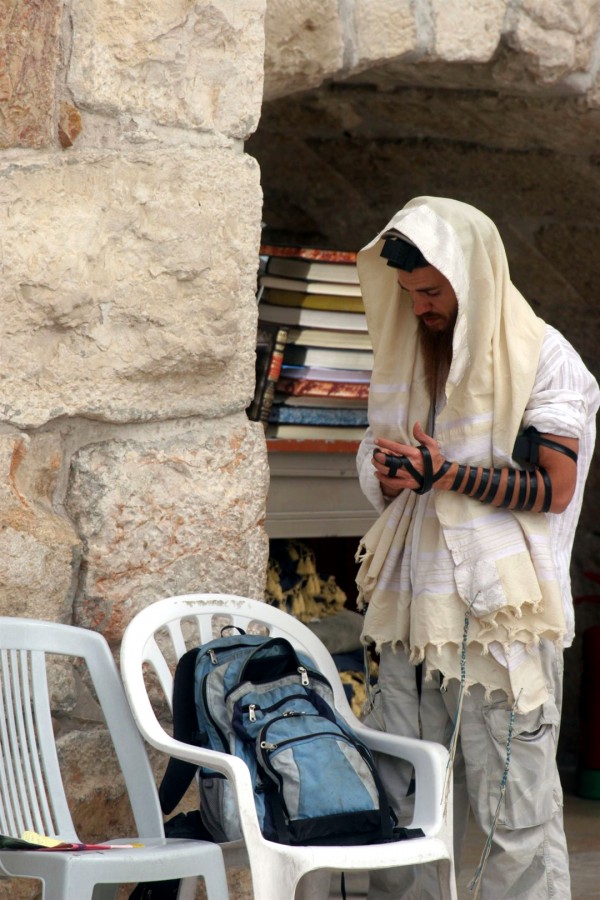
A Jewish man wearing a tallit (prayer shawl) and tefillin (phylacteries) prays at the Western Wall in Jerusalem.
One New Man: The Completed Jew
Unfortunately, for 2,000 years, Christianity has developed an expression of faith separated from its original heritage of Judaism.
Jewish Believers in Yeshua, however, have not been separated from Judaism and understand almost immediately that their faith in the Messiah has everything to do with being Jewish and that it is deeply rooted in Judaism and the Messianic prophecies.
In the same way that it is unnecessary for Gentiles to “convert” to Judaism when they accept Yeshua as their Messiah, it is quite unnecessary for Jewish Believers to “convert” from Judaism to Christianity. Why? Because our Torah, prophets, and writings all point to Yeshua as being the One we so earnestly pray will come.
While some Jewish Believers in Yeshua as Messiah do call themselves completed Jews, others prefer to be called Messianic Jews. Others make no distinction at all—they are simply Jewish.
A great many Jews who follow Yeshua celebrate the appointed times that God gave in the Torah to His Chosen People. Many also maintain traditional customs, rituals, and holidays, especially those that Yeshua Himself kept, such as wearing tzitzit (fringes) and celebrating Hanukkah.
And we rejoice in the New Covenant that the Prophet Jeremiah foresaw:
“‘The days are coming,’ declares the LORD, ‘when I will make a new covenant with the people of Israel and with the people of Judah. It will not be like the covenant I made with their ancestors.’” (Jeremiah 31:31–32)
None of this, though, is meant to build a wall of division between Jewish and Gentile Believers. And such a wall is certainly not the will of God.
The One New Man Foreshadowed in the Old Covenant
On Shavuot (Pentecost), the first Believers, who were nearly all Jewish, recognized that the New Covenant had begun, but they didn’t immediately recognize that non-Jews should be part of God’s people or His New Covenant blessings.
It took them awhile to uncover the truths in the Hebrew Scriptures that point to the inclusion of the Goyim (non-Jews) into God’s covenantal plan for mankind.
- Abraham, the father of the Hebrew people from whom “all nations will be blessed,” was called out from the goyim of Ur (Genesis 12:1).
- Abraham left the land of Ur with his wife, his possessions and “the souls that they had made” (Genesis 12:5). The Babylonian Talmud (Sanh. 99b) says these souls were Gentiles whom Abraham proselytized and became loyal to his faith.
- Ruth, a Moabite, declared, “Your people shall be my people, and your God, my God” (Ruth 1:16). This Moabite woman became thAs wie grandmother of King David and ancestor of Messiah.
- Amos prophesied the unity of Jew and Gentile without walls (Amos 9:11–12, discussed below).
In keeping with God’s plans, Messiah Himself healed and ministered to both Jew and Gentile.
While traveling through pagan territory, Yeshua told a Canaanite woman seeking deliverance for her demon-possessed daughter, “I was sent only to the lost sheep of Israel” (Matthew 15:24). He appears to be merciless toward this desperate Gentile mother—until she proves her faith in Him as the true Messiah.
As with this Canaanite woman, belief in the God of Israel and His plan for humanity have always been the requirement for the Goyim or Gentiles to partake in the blessings and responsibilities of His covenants.
There are many examples of Yeshua healing non-Jews who were full of such faith; for example, He healed a Roman centurion’s servant (Luke 7:1–10), saying, “I have not found such great faith even in Israel” (v. 9).
Others would have great faith and become His witnesses because of their encounter with the healing power of Yeshua. For instance, He delivered the demon-possessed man in the region of the Gerasenes (Mark 5:20), and he ministered to the Samaritan woman (John 4). Both spread the good news throughout their villages.
In the act of healing, Yeshua was proving that God anointed and sent Him as Isaiah foretold so that “the eyes of the blind shall be opened, and the ears of the deaf unstopped; then shall the lame man leap like a deer, and the tongue of the mute sing for joy.” (Isaiah 35:5–6)
Yeshua Himself explained to His Jewish disciples that He was their Good Shepherd, but that they were not His only sheep:
“I have other sheep that are not of this sheep pen. I must bring them also. They too will listen to My voice, and there shall be one flock and one shepherd.” (John 10:16)
All of this implies that Yeshua expected non-Jews to be part of the Kingdom of God.
Nevertheless, we see that the earliest Believers ministering in regions of Phoenicia, Cyprus and Antioch were “spreading the word only among Jews” (Acts 11:19).
They did so because they understood their faith as strictly an expression of Judaism. They fully expected that all Israel would know that Yeshua is the Messiah and that Gentiles would be saved by becoming one with (or converting to) a redeemed Jewish People.
Jewish Believers Accept Gentile Believers
It took a special vision (Acts 10:10–16) to convince the apostle Peter that it was acceptable for him as an observant Jew to enter the home of a pagan (the Roman centurion Cornelius) to share the Good News.
We learn, however, in Acts 11:20–25 that some of the Jews in Cyprus and Cyrene began to share their faith with Hellenists (Jews who were following a Greek lifestyle, although this also might refer to Greek-speaking non-Jews) in Antioch who also came to faith in Yeshua.
When the Believers in Jerusalem learned of this, they sent Barnabas to Antioch to confirm it. He saw and was convinced of the sincerity of their faith, exhorting them “all to remain faithful to the Lord with steadfast purpose.” (Acts 11:23)
Barnabas went to Tarsus to get Paul and bring him back to Antioch where they continued to teach the Believers for an entire year.
The Bible tells us that it was here that the disciples were first called Christians, or in Hebrew Notzrim, which literally means followers of Yeshua the Nazarene or Yeshua HaNotzri.
It is possible that the Hellenists mentioned in the Book of Acts were a mix of Jews and non-Jews. At any rate, many of the Jews had probably taken non-Jewish Hellenistic wives. They were essentially pagans being introduced to what had once been a solely Jewish sect of the Jewish faith and who were now becoming transformed into one new man with that sect.

British Christian Zionists offer blessings to Israeli border police during the annual Sukkot Jerusalem March. Christian Zionists have become a potent force in international politics because of their support for the State of Israel.
Without question, it was the role of Paul (formally the Pharisee Saul of Tarsus) to bring the Jewish Gospel to the pagans or Gentiles of the Roman Empire.
This is clearly expressed in his letters and teachings, as in Romans 3:29: “Is God the God of Jews only? Is He not the God of Gentiles too? Yes, of Gentiles too.”
Although Yeshua is the Jewish Messiah who had come to bring salvation to Israel, He is also the “light for the Gentiles” (Isaiah 42:6). It was the role of Jewish Believers to bring His message to the Jewish People first, and also to the world.
In the Book of Acts, Peter quotes the Hebrew Prophet Joel saying essentially that God’s Ruach HaKodesh (Holy Spirit) is being poured out on all people, and that “everyone who calls on the name of the Lord will be saved.” (Acts 2:17–21)
Still, as we said, it was not God’s intent to create a new religion. In fact Paul clearly explains in his letter to the Romans (Romans 11:11–31) that the Believing Gentiles, who are the wild olive branches, have been grafted into the same olive tree “and now share in the nourishing sap from the olive root.” (v. 17)
Paul warns the Romans, however, not to boast against the natural branches who were broken off in unbelief but, instead, relish the kindness of God. When the broken branches come to faith, as Jewish Believers, they will be grafted back into their own tree and be nourished along with the Gentiles by the same root.
The One New Man: Prophesied Intimacy for Jew and Gentile
Although a manmade split from the root occurred between Jews and Gentiles during the last 2,000 years, this was never God’s intent.
We read in Ephesians that it is God’s desire to bring “together in one all things in [Messiah].” (Ephesians 1:10)
Sid Roth, Messianic Jew and host of “That’s Supernatural” speaks of a time of unity within the body of Messiah “when the wall between Jew and Gentile is removed, the spiritual temple, God’s dwelling place, will be restored, and this One New Man will release resurrection power to the church that Paul calls ‘life from the dead!’”(Romans 11:15)
Sid quotes Ephesians to further support this: “For He Himself is our peace, who has made both [Jew and Gentile] one, and has broken down the middle wall of separation … to create in Himself one new man … in whom you also are being built together for a dwelling place of God in the Spirit.” (Ephesians 2:14–15, 22)
He explains that for a true outpouring of God’s Ruach to occur in these end times, the Jew and the Gentile Christian must come together as One New Man. This new man was prophesied by Amos.
Amos described how God would build up the tabernacle of David, a unique structure in that it had no separating wall between the people and God, no Holy of Holies, and everyone was able to experience God’s presence.
“In that day I will raise up the booth of David that is fallen and repair its breaches, and raise up its ruins and rebuild it as in the days of old.” (Amos 9:11)
This rebuilding is not only for the Jewish People. It is so ”that they may possess the remnant of Edom and all the nations [goyim–Gentiles] who are called by My name.” (v. 12)
In fact, when the Jewish leaders were trying to decide what to do about the Gentiles, Jacob (James—the half-brother of Yeshua) quoted Amos 9:11–12 as evidence that “we should not make it difficult for the Gentiles who are turning to God.” (see Acts 15:13–19)
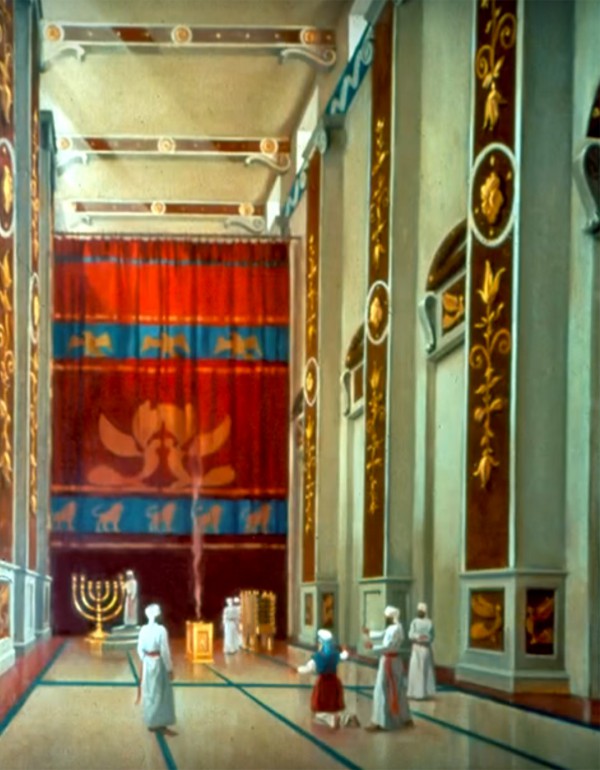
3D model of the veiled entrance to the Holy of Holies in a possible Third Temple. (Temple Institute YouTube capture)
From long ago, the plan of God was to re-establish the kind of intimacy with Him that was experienced in the Garden of Eden.
That plan came to fruition when the veil that separated the Holy of Holies from mankind was torn from top to bottom.
In Ephesians 2:14, Paul explains that through Yeshua, the enmity between Jew and Gentile has ceased, the dividing wall has been breached and that now both groups are one.
That dividing wall is not the Torah (God’s Law or Instruction) as many Christians teach. It may not even be the “middle wall of partition” that kept Gentiles out of the Temple court, even upon threat of death.
Paul just might have referred to the wall or fence built up by Rabbinic traditions and oral laws that, in effect, kept Jewish people at enmity with Gentiles, rendering them unclean.
“The practical outworking of the Rabbinic laws of purity, … raised a strong wall of separation between the observant Jew and the non-Jew even if this was not the original intent. With the emphasis put upon purity by the Rabbis, separation from those things that rendered a person unclean was inevitable. And, when Gentiles were added to the “list” of those things that communicate uncleanness, the wall was built between Jew and Gentile.
“According to oral Torah, mere contact with non-Jews could render a person unclean,[45] as well as contact with the residence of a non-Jew[46] or even with land outside the Land of Israel.[47] Contact with any object used for idolatrous worship was added to the list of what might render a person unclean.[48] Clearly, the oral Torah of the 1st Century functioned to separate Jew and Gentile in a dramatic way.” (The ‘Dividing Wall’” in Ephesians 2:14: What is it? Who made it? How was it broken down?, by Tim Hegg)
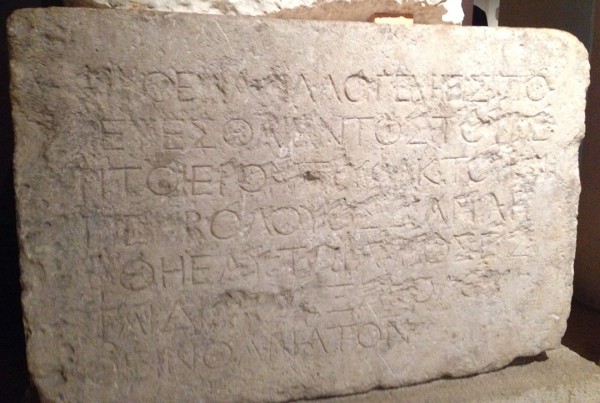
Jerusalem Temple Warning Inscription discovered on the Temple Mount in 1871 is written in Greek on limestone. It was placed on the wall that separated the inner Jewish court from the outer Gentile court. Translated, it reads: “Let no foreigner enter within the parapet and the partition which surrounds the Temple precincts. Anyone caught [violating] will be held accountable for his ensuing death.” (Photo: Wikicommons author oncenawhile; license CC BY-SA 3.0)
The good news is that Yeshua’s sacrifice broke down every barrier that would keep a Gentile away from accesssing the intimacy, love, and salvation of God.
In place of these barriers, God sent His Holy Spirit, which does not divide but unites all Believers into one body.
Historically, however, Christianity has worked to build its own walls of separation. One way it has done that is by denouncing God’s appointed times and replacing them with their own, such as Christmas and Easter.
Another way has been through its ill treatment of the Jewish People. Ultimately this led to expulsions as in the case of England in 1290 and Spain in 1492, and finally attempted annihilation during the Crusades, Inquisitions, and Holocaust.
After the Holocaust, these historical wrongs were, in theory, reversed through such groundbreaking documents as the Catholic Church’s 1965 Nostra Aetate (Latin for In Our Time) that finally disowned the doctrine that the Jews were to blame for killing Yeshua.
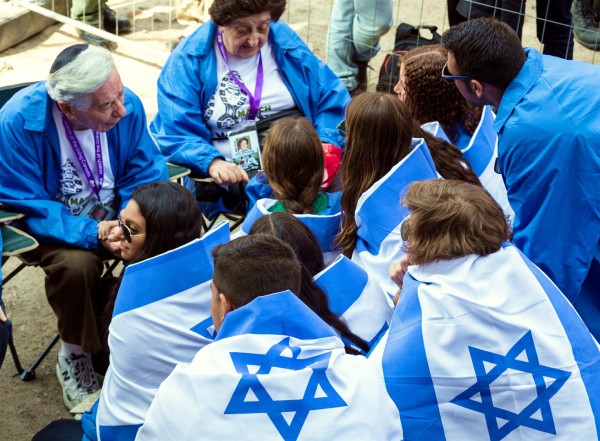
Teens wrapped in Israeli flags at the Auschwitz extermination camp listen to the testimony of Holocaust survivors.
Modern Wall-Building Efforts
The return of the Jewish people to their own land in 1948 should have marked the end of the age of forced dispersion and exile with nowhere to go, but modern day wall-building efforts to delegitimize and even annihilate Israel are promoted throughout the world.
For instance, international groups support efforts to back the BDS (Boycott, Divestment and Sanctions) movement against the Jewish state. Some, however, recognize the true wall-building intent of this movement:
“At the core of the BDS movement is a quest to delegitimize Israel as a sovereign, democratic and Jewish state,” said Steven Nasatir, Executive Vice Chairman of the Chicago-based Jewish United Fund. (JNS)
NGO Monitor calls the movement “BDS in the Pews,” which has influential leaders attending and teaching, leaders who are influencing Christian youth today.
“Arguably and since it began in 2010 [during Israel Apartheid Week], the entire Christ at the Checkpoint movement aims to be the lever that tips, or converts, those millennials into religious ambivalence, if not hostility, toward the Jewish state and Jews everywhere.” (Evangelical Terrorism Opinion Piece, JPost)
Hank Hanegraaff, widely known as “The Bible Answer Man” has insisted that all the covenants of Abraham have been fulfilled and that there are no promises left for the Jewish People, not even the everlasting Land promise given to Abraham, Isaac, and Jacob as promised in Genesis 13:15, 17:8; Isaiah 43:5–7, 60:21; Ezekiel 37:25, 45:8; Amos 9:15; and many other Scriptures.
Hanegraaff also stated that Christian Zionism is the force that resulted in secular Zionism, which caused the ethnic cleansing of Palestinians and created the most displaced people group (Palestinians) in history when Israel was established in 1948.
Mark Labberton, former president of Fuller Theological Seminary, which has campuses in California, Washington, Arizona, and Texas, holds similar views.
Labberton’s reflections on Yeshua’s Sermon on the Mount in the Book of Matthew continually emphasized the righteous truth that loving our enemies as Christ and Father God do is the obligation of Christians and followers of Yeshua.
However, in the context of the overall conference, the audience understands that the enemies are those who built the physical wall that separates Bethlehem and greater Jerusalem—not the Islamic terrorists who are the reason behind the need for the wall.
These kinds of international, political, and spiritual wall-building movements must be denounced if Jewish and Gentile Believers in Yeshua are to walk in the authority of the One New Man, bringing the Good News to Israel and the world.
Modern Wall-Demolishing Efforts
Paul described to the Gentile Ephesians what the One New Man should look like:
“You are no longer foreigners and strangers, but fellow citizens with God’s people and also members of His household, built on the foundation of the apostles and prophets, with Yeshua HaMashiach [Christ Jesus] Himself as the chief cornerstone. In Him the whole building is joined together and rises to become a holy temple in the Lord.” (Ephesians 2:19–21)
This one Temple will not have a Jewish wing and a Gentile wing. It will have no walls; Jew and Gentile will join together in One Body, just as Amos 9:11–12 prophesied.
Let’s look at how a few Jewish People are helping to make this One New Man a reality.
Curt Landry, CEO of Curt Landry Ministries, My Olive Tree, and Dead Sea Moringa
As ministry leader Curt Landry explains it, in order to walk in the power of the One New Man, Gentiles are going to have to return to their Jewish roots to gain a deeper understanding of what is rightfully theirs and to claim the blessings of that inheritance.
He also stresses that Jews and Gentiles alike come together to “honor the Jewish roots of our faith and the feasts of Israel—the feasts of our Lord—with the wonderful gift and knowledge of our salvation through Yeshua, our Messiah.”
Furthermore, he believes that followers of Yeshua are to walk in covenant restoration (Romans 5:9–10). That covenant is the one given to the Jewish people. However, he says that “our covenant is restored through salvation,” while the fullness of the covenant is understood through the work of the Ruach “and the power of the Word over time.”
And he emphasizes that complete knowledge of where we came from and where we are going comes only through knowledge of God’s entire Word.
“The message of The One New Man does just that, as it ultimately brings the light of the past into the present, thus illuminating the path to our future!” Landry states on his website.
Dennis Prager, Radio Commentator, Jewish Leader and co-founder of Prager University
While not a Believer in Yeshua, Dennis Prager has embraced the One New Man concept for pragmatic reasons. He has often said that all Jews should kiss a Christian because it is Christians who are supporting Israel on college campuses are making anti-BDS legislation possible.
As well, it is Christians who have been taking the Torah to the world and who share fundamental values in common with the Jewish People.
What this unity in values is capable of is most prominently expressed in the founding documents of the great experiment, which is the United States of America and its longstanding alliance with Israel.
Dennis promotes and praises these accomplishments of the One New Man in secular and political endeavors. Of course, as a Jewish person who has not yet encountered his Messiah, Dennis is not yet united on the issue of salvation.
Dr. Mitch Glaser, President of Chosen People Ministries
In the book Unity: Awakening the One New Man, Mitch Glaser contends that when it comes to salvation, the Jews have no advantage over the Gentiles (Romans 3:1). Mich explains this is Paul’s way of saying that “the ground is level at the foot of the cross,” and that “the end result of Jesus’ work on the cross is peace between Jews and Gentiles—a microcosm of the Kingdom reconciliation.”
He says that through Yeshua there is peace and unity between Jew and Gentile, and “the Torah that previously divided us now brings us together.”
In the Torah, we learn of God’s nature and will for mankind and that this belongs to Jew and Gentile alike. He adds that it is his personal belief that through the Messiah’s death, God has “created a deeper and more profound unity between Jews and Gentiles in Jesus,” but He has not obliterated the differences “created by God Himself.”
Mitch reminds us that while there are no commandments in the New Testament to celebrate Christian holidays like Easter and Christmas, the Old Testament commands Jews to celebrate the Jewish holidays, as did Yeshua.
He says it is just as important for Messianic Jews to hold onto their Jewishness as it is for non-Jews to “show a deeper understanding and love for the Jewish People.”
In that way, says Mitch, “the witness of the One New Man is made all the more powerful.” And to this we can all say “Halevai” or “may it be so.”




